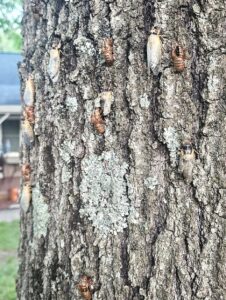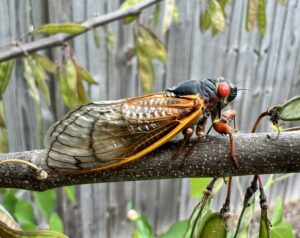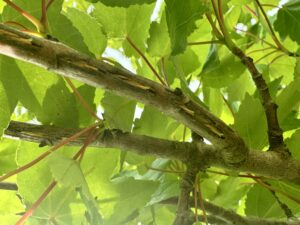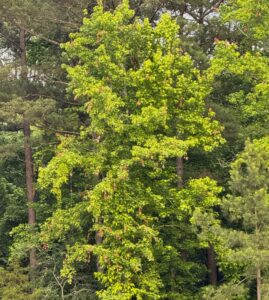Back With a Buzz: Brood XIV Cicadas Emerge in Western NC
go.ncsu.edu/readext?1070401
en Español / em Português
El inglés es el idioma de control de esta página. En la medida en que haya algún conflicto entre la traducción al inglés y la traducción, el inglés prevalece.
Al hacer clic en el enlace de traducción se activa un servicio de traducción gratuito para convertir la página al español. Al igual que con cualquier traducción por Internet, la conversión no es sensible al contexto y puede que no traduzca el texto en su significado original. NC State Extension no garantiza la exactitud del texto traducido. Por favor, tenga en cuenta que algunas aplicaciones y/o servicios pueden no funcionar como se espera cuando se traducen.
Português
Inglês é o idioma de controle desta página. Na medida que haja algum conflito entre o texto original em Inglês e a tradução, o Inglês prevalece.
Ao clicar no link de tradução, um serviço gratuito de tradução será ativado para converter a página para o Português. Como em qualquer tradução pela internet, a conversão não é sensivel ao contexto e pode não ocorrer a tradução para o significado orginal. O serviço de Extensão da Carolina do Norte (NC State Extension) não garante a exatidão do texto traduzido. Por favor, observe que algumas funções ou serviços podem não funcionar como esperado após a tradução.
English
English is the controlling language of this page. To the extent there is any conflict between the English text and the translation, English controls.
Clicking on the translation link activates a free translation service to convert the page to Spanish. As with any Internet translation, the conversion is not context-sensitive and may not translate the text to its original meaning. NC State Extension does not guarantee the accuracy of the translated text. Please note that some applications and/or services may not function as expected when translated.
Collapse ▲
Brood XIV is emerging now in Western NC! Photo by Michael Crouse, NC Forest Service.
This spring, residents of western North Carolina are witnessing a remarkable natural event: the emergence of Brood XIV, one of the largest broods of 17-year periodical cicadas. These cicadas are the offspring of cicadas that emerged in 2008 — when George W. Bush was president, the first film in the Marvel Cinematic Universe (“Iron Man”) was released , and The Motorola RAZR was the top-selling phone.
Triggered by warming soils, Brood XIV is now surfacing in Buncombe, Burke, Caldwell, Catawba, Henderson, McDowell, Mitchell, and Wilkes Counties.
Periodical cicadas (Magicicada spp.) are unique to the eastern United States. Unlike annual cicadas, which appear every summer, periodical cicadas spend 13 or 17 years (depending on the species) underground as nymphs, feeding on tree roots. After spending most of their life underground, they emerge en masse to molt, mate, and lay eggs before dying within a few weeks.

Periodical cicadas are usually black or brown with red or orange eyes. This cicada is a 13-year species from Brood XIX in 2024. Picture by Kelly Oten, NC State.
They’ll be hard to miss — if not by sight, then by sound! Male cicadas produce a loud buzz which can reach over 100 decibels. While noisy to us, this is very attractive to female cicadas, which have one goal in their aboveground life: to reproduce.
Fear not! Cicadas do not bite or sting and are harmless to us and our pets. However, their egg laying, which entails cutting into twigs and stems with a saw-like egg-laying structure, can harm plants. Usually, this doesn’t cause long-term damage, but branch tips may be killed. Anecdotally, reports suggest this damage results in a flush of new growth the following growing season.
So, enjoy the short-lived cacophony! This particular show won’t be back for another 17 years, in 2042!

Cicada egg-laying damage. Photo by Kelly Oten, NC State.

Egg-laying by female cicadas can cause branch tip dieback. Picture by Kelly Oten, NC State.


